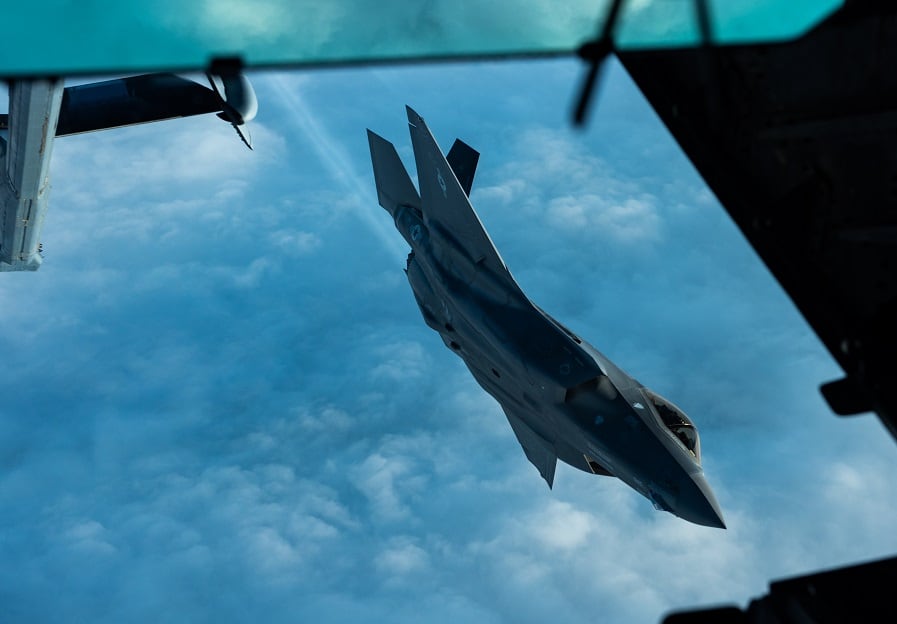NATIONAL HARBOR, Md. — The Defense Department is preparing for the stand-up of an independent Space Force that could strip away the Air Force’s space enterprise. If that doesn’t end up happening, the Air Force is making the case that it needs at least seven more operational space squadrons in order to take on adversaries like Russia and China.
During a Sept. 17 speech at the Air Force Association’s national conference, Air Force Secretary Heather Wilson announced that the service will need to grow from 312 to 386 operational squadrons to meet the needs of the new national defense strategy.
Of the 74 new squadrons proposed, seven would be dedicated to the space warfighting mission, increasing the total from 16 to 23 operational space squadrons.
Read more from Air Force Association 2018 conference!
“The president directed the Defense Department to establish a sixth branch of the armed forces for space. America is the best in the world at space, and our adversaries know it,” Wilson said. “We can no longer use space as a function. It is a warfighting mission.”
RELATED

Wilson struck a reassuring tone in her comments about space, telling the crowd of airmen gathered for the conference that the Air Force continues to be involved with the Defense Department’s Space Force creation effort. The service submitted a plan on Friday that laid out a proposed structure and responsibilities of the new Space Force.
That Air Force proposal, in turn, will inform the fiscal year 2020 budget proposal that communicates to Congress how the Defense Department plans to turn the Space Force into a standalone service.
“That proposal must contain all of the elements needed for space to be fully successful as a department. It must maintain the close connection between acquisition and the warfighter, and it must deepen the already close connection between military space and the space elements of the intelligence community.”
Space News obtained a copy of the Sept. 14 memo, in which Wilson lays out a path to create a Space Development Agency — a rapid technology development organization that will eventually transition from the Air Force to the Space Force. She envisions the Space Development Agency as a part of the Air Force’s Space Rapid Capabilities Office with strong ties to space operators.
According to the report, Wilson diverges from Deputy Defense Secretary Patrick Shanahan, who submitted his own proposal, on two key counts.
She objected strenuously to the White House proposal to create an assistant secretary of defense for space, arguing that the position was unnecessary. She also calls for the Space Development Agency to wrap in the intelligence community — specifically the National Reconnaissance Office — while Shanahan argues for the organizations to remain separate, Space News reported.
The Space Force has been a sore spot between the Air Force and its supporters in Congress, and later the White House.
Wilson and Air Force Chief of Staff Gen. Dave Goldfein initially opposed the plan, telling Congress that separating space from the Air Force could detract from efforts to boost the military’s overall space warfighting capability. But once President Donald Trump voiced his support for such a plan, both Wilson and Goldfein tempered their criticism.
RELATED

Earlier this month, Wilson said that she is now in “complete alignment” with Trump’s push to create a Space Force.
“A new department will require legislative action and funding from Congress,” Wilson said. “But we don’t need to wait for legislation to continue to accelerate defendable space. There are actions that the Air Force can take immediately, without further action from Congress.”
Wilson pointed to moves like the restructuring of Space and Missile Systems Center, the Air Force’s acquisition center for space platforms. It is also helping the joint staff stand up a new unified combatant command for space, she said, and its Rapid Space Capabilities office will allow the Defense Department to continue to accelerate priority programs.
Valerie Insinna is Defense News' air warfare reporter. She previously worked the Navy/congressional beats for Defense Daily, which followed almost three years as a staff writer for National Defense Magazine. Prior to that, she worked as an editorial assistant for the Tokyo Shimbun’s Washington bureau.







